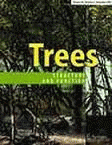The response of plant species to varying climate conditions in tropical Africa remains poorly understood but can be assessed using wood anatomical traits. These traits play an important role for the adaptive capacity of a species to environmental stress, since environmental conditions can modify the proportion, size, and morphology of wood anatomical elements. This study reports quantitative data on vessel characteristics of the diffuse porous angiosperm Spiny monkey orange (Strychnos spinosa Lam.) in Benin in tropical West Africa. The vessel-related anatomical traits varied with high amplitude (coefficient of variation CV ˃ 25%) between different sites located in different climate zones. The variability of the traits is higher within one climatic zone than between climatic zones, and even more pronounced within trees. Consequently, the climatic zones have less influence on the studied features than local site conditions. However, the study showed that S. spinosa individuals that have numerous vessels also have a high lumen fraction and total ring area. On the other hand, individuals presenting a high vessel density also display vessels of smaller size. The correlation between vessel number and total ring area on the one hand, and between vessel size and lumen fraction on the other hand are highly significant and positive. In Benin, S. spinosa wood anatomical traits are likely linked to local site factors rather than to regional climatic factors.
DOI:
https://doi.org/10.1016/j.dendro.2022.125941
Altmetric score:
Dimensions Citation Count:
























